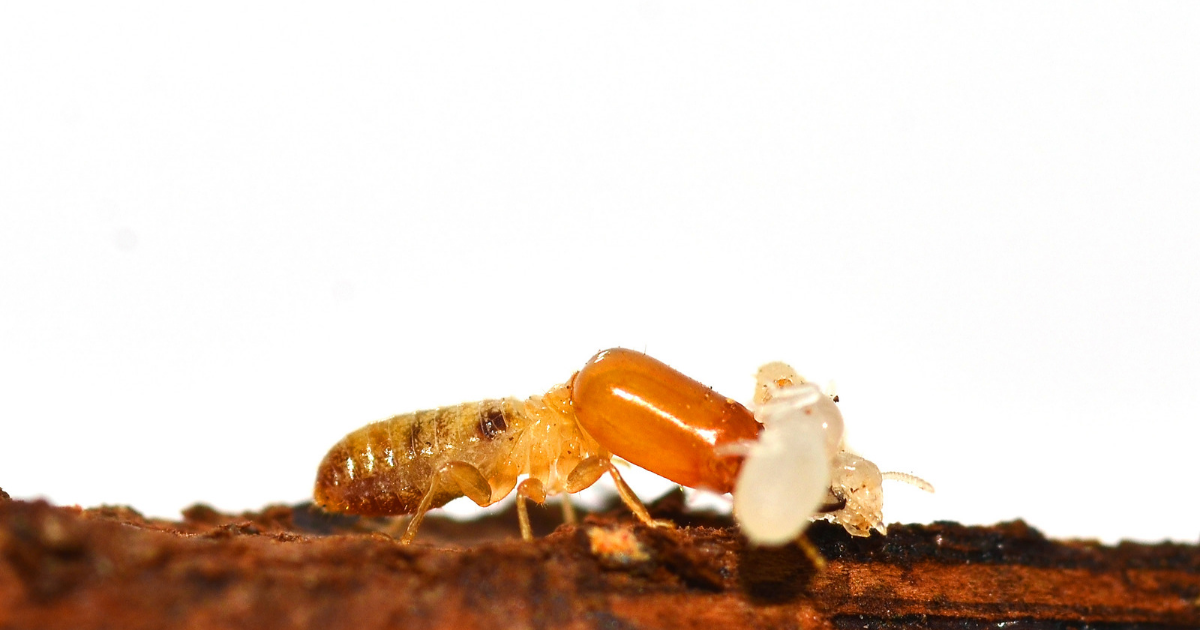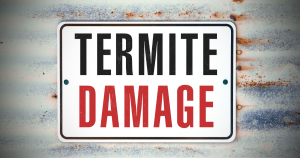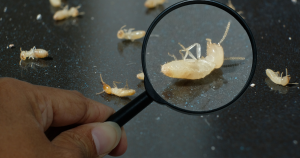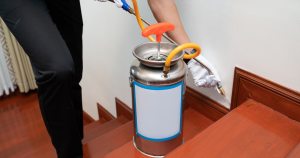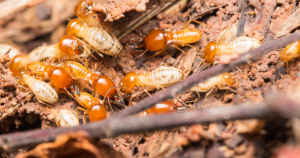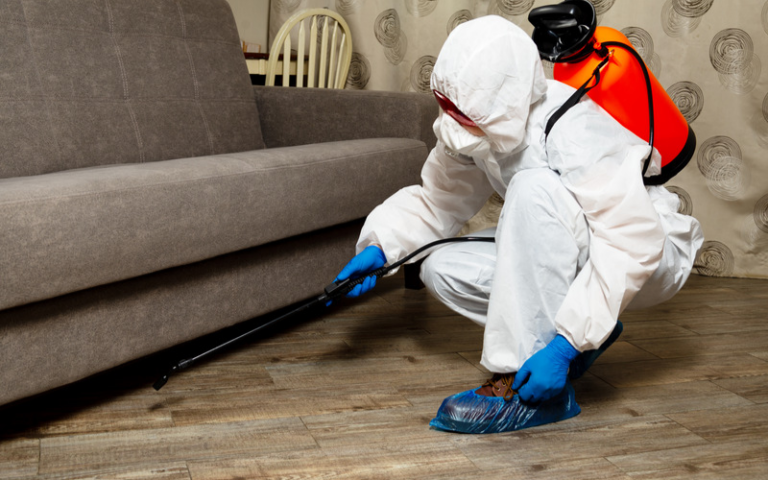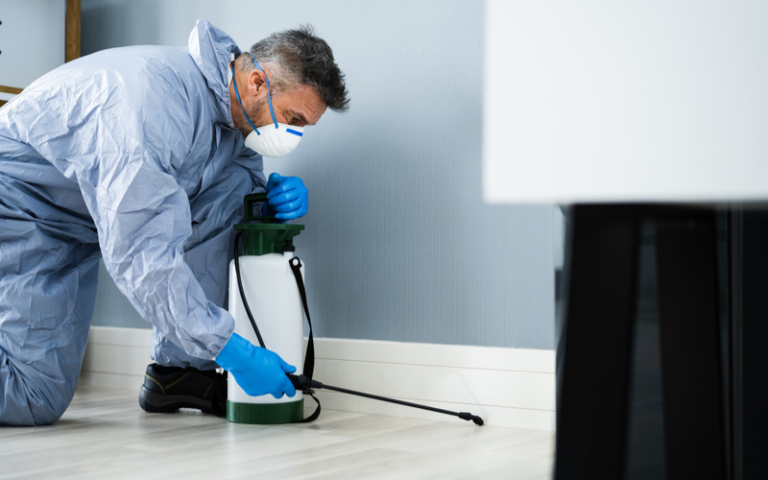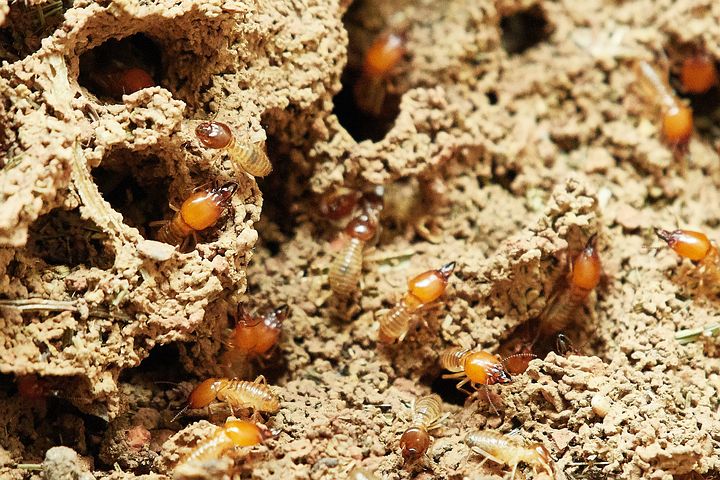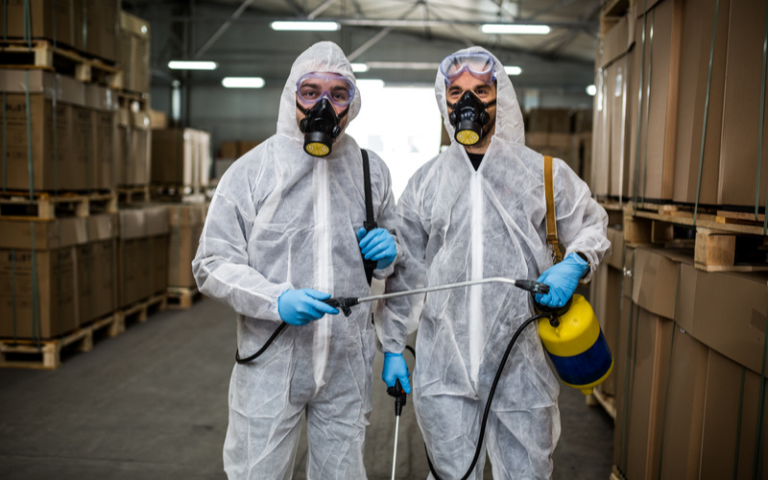Termites are small insects that live in colonies. There are over 2,000 different species of termites, but the most common type of termite in the United States is the Formosan termite. Formosan termites are especially destructive, and they can cause a lot of damage to your home if they’re not dealt with quickly. If you think you might have a problem with termites, it’s important to call a professional exterminator right away. But what can you do in the meantime? Read on to find out how to get rid of termites in your home.
There are a few things you can do to get rid of termites in your home. One is to remove any sources of food that they might be attracted to. This means sealing up cracks and crevices in your walls and floors where they might be able to get into your home, and making sure there is no food or moisture for them to feed on. Another thing you can do is to use bait traps. Bait traps work by attracting termites with a food source and then trapping them so they can’t escape. You can also use chemicals to kill termites, but this should only be done as a last resort because it can be harmful to humans and pets if not used correctly.
If you think you might have a problem with termites, the best thing to do is call a professional exterminator right away. But there are a few things you can do in the meantime to try and get rid of them. Remove any sources of food that they might be attracted to, use bait traps, or use chemicals as a last resort. Whatever method you choose, getting rid of termites quickly is important to protect your home from further damage.
The Cause of Termites & How to Prevent Them
Springtime is here, which means warmer weather, blooming flowers and termites. While these little critters may seem harmless, they can actually cause a lot of damage to your home if left unchecked. So, what causes termites? And how can you prevent them from wreaking havoc on your property? Keep reading to find out.
The Cause of Termites: Moisture
Termites are attracted to moisture, which is why they’re often found in damp areas like crawl spaces and basements. If your home has any leaks or other sources of moisture, it’s only a matter of time before termites find their way in.
How to Prevent Termites?
The best way to prevent termites is to eliminate moisture from your home. This means repairing any leaks, fixing plumbing issues, and ensuring that there’s proper ventilation in crawl spaces and other damp areas. You should also make sure that gutters and downspouts are clear so that water can drain properly away from your home. Regularly inspect the exterior of your home for signs of termite damage, such as mud tubes or wood that sounds hollow when tapped. If you spot anything suspicious, call a professional exterminator right away.
No one wants to deal with termites, but unfortunately, these pests are more common than you might think. The key to preventing them is to eliminate moisture from your home—something that’s easier said than done. If you suspect that you already have a termite problem, the best thing to do is call a professional exterminator who can get rid of the pests for good.
What Are The Different Types of Termites and How Do I Get Rid of Them?
If you own a home, then it’s important to familiarise yourself with the different types of termites that could potentially infest your property. We’ll discuss the two most common types of termites—subterranean and drywood—and provide some tips on how to get rid of them if you find them in your home.
Subterranean termites are the most common type of termite in the United States. As their name suggests, they live in underground colonies and build mud tunnels to access food sources (i.e., wood). Subterranean termites are most active in the spring and summer months when the soil is moist.
Drywood termites, on the other hand, do not require contact with soil to survive. They live in dry, above-ground wood and can go for long periods of time without access to water. Drywood termites are most active during the summer months.
Detecting Termites in Your Home
There are a few signs that you may have a termite problem in your home, including:
-
Mud tubes on the exterior of your home
Subterranean termites build mud tubes as a way to travel from their nests to their food sources. These tubes are made from bits of wood, soil, and saliva, and they’re usually about the width of a pencil. If you see mud tubes on your home’s foundation or on any wooden surface, it’s a good indication that you have a subterranean termite problem.
-
Hollowed or structurally damaged wood
Both subterranean and drywood termites eat wood from the inside out, which means they leave behind a thin layer of wood that’s structurally weak and easy to break. If you tap on a piece of wood in your home and it sounds hollow, there’s a good chance it’s infested with termites.
-
Swarms of winged insects
Some types of termites (i.e., reproductives) have wings so they can fly away from their nests and start new colonies elsewhere. If you see swarms of these winged insects around your home, it’s an indication that there’s a mature nest nearby.
-
Discarded wings
After reproductives fly away from their nests to start new colonies, they shed their wings so they can mate with other reproductives. If you find piles of discarded wings around your home, feature cracks, or openings in your walls or ceilings, it’s likely because there’s a mature nest nearby.
If you notice any of these signs in or around your home, it’s important to call a pest control professional right away as termites can cause significant damage to your property if left untreated.
Getting Rid Of Termites
If you think you have a termite problem in your home, the best course of action is to call a pest control professional who can properly assess the situation and recommend an appropriate treatment plan. Do-it-yourself methods (e.g., using insecticides) are typically not effective against termites as they often only kill the ones that come into contact with the insecticide—leaving the rest of the colony unharmed. Additionally, do-it-yourself approaches put you at risk for exposure to harmful chemicals so it’s always best to leave pest control treatments to the professionals.
Termites are small but mighty pests that can cause significant damage to your property if left untreated. Familiarizing yourself with the different types of termites—subterranean and drywood—and knowing what signs to look for will go a long way in protecting your home from these destructive pests. If you think you might have a termite problem in your home, don’t hesitate to call a pest control professional right away as they will be able to properly assess the situation and recommend an effective treatment plan.
How to Tell if You Have a Termite Problem?
Termites are one of the most destructive pests in the world. Each year, they cause billions of dollars in damage to homes and buildings. If you think you might have a termite problem, it’s important to act fast. Here are some signs that you may have termites:
Hollow Wood
One of the first things you’ll notice if you have termites is hollow wood. Termites eat wood from the inside out, so if you tap on a piece of wood and it sounds hollow, there’s a good chance it’s infested with termites.
Mud Tubes
Another sign of termites is the presence of mud tubes. These are small tubes made out of mud that termites use to travel between their nests and their food source (i.e., your house). Mud tubes are usually about the thickness of a pencil and can be found on walls, foundation, or anywhere else where there’s wood.
Swarming Evidence
If you see what looks like flying ants around your home, it could be a sign that you have termites. Once a year, termites swarm in order to mate and create new colonies. This is usually the only time you’ll see live termites since they spend most of their lives hidden away in tunnels underground or inside the wood they’re eating.
Peeling Paint
Another common sign of termite damage is peeling paint. This is due to the fact that termites eat wood from the inside out. As they eat away at the wood beams in your home, they weaken them, causing the paint to peel off.
Frass
Frass is another word for termite droppings. It looks like sawdust and can be found near areas where there is active termite activity.
Live Termites
If you actually see live termites crawling around your house, it’s pretty much guaranteed that you have an infestation. Termites are secretive creatures and spend most of their lives hidden away in tunnels underground or inside the wood they’re eating, so if you see them out in the open, it means there’s a serious problem.
These are just some of the signs that you may have a termite problem. If you notice any of them, it’s important to call a professional exterminator right away. The sooner you act, the less damage Termites will do to your home.
How to Get Rid of Subterranean Termites?
If you have subterranean termites, you’re not alone. These pests are some of the most destructive insects in the world, causing billions of dollars in damage every year. The good news is that there are a number of things you can do to get rid of subterranean termites. In this blog post, we’ll take a look at a few of the most effective methods for getting rid of these pests.
Baiting Systems
Baiting systems are one of the most effective methods for getting rid of subterranean termites. These systems work by attracting termites to a bait station that contains a toxic substance. Once the termites feed on the bait, they will take the poison back to their nest, where it will kill the entire colony.
The best baiting systems on the market use a slow-acting poison that gives the termites time to feed on the bait and take it back to their nest. This ensures that the entire colony is destroyed, rather than just a few individual termites. Some baiting systems also come with monitoring devices that will alert you if there is any activity around the bait station.
Liquid Insecticides
Liquid insecticides are another effective method for getting rid of subterranean termites. These products work by either killing termites on contact or repelling them from an area. When used correctly, liquid insecticides can be very effective at getting rid of subterranean termites.
If you’re considering using a liquid insecticide to get rid of subterranean termites, be sure to choose a product that is specifically designed for this purpose. Additionally, make sure to follow all label directions carefully to ensure safe and effective use of the product.
Subterranean termites are some of the most destructive insects in the world, causing billions of dollars in damage every year. If you have these pests in your home, it’s important to take action immediately to get rid of them. Baiting systems and liquid insecticides are two of the most effective methods for getting rid of subterranean termites. Be sure to choose a product that is specifically designed for this purpose and follow all label directions carefully when using these products. Taking these steps will help ensure that you get rid of your subterranean termite problem once and for all.
How to Get Rid of Drywood Termites in Your Home?
Drywood termites are one of the most destructive pests, causing billions of dollars in damage every year. If you suspect you have a drywood termite infestation, it’s important to take action immediately to get rid of the pests and prevent further damage to your home. Here are three steps you can take to get rid of drywood termites:
Locate the source
The first step to getting rid of drywood termites is to locate and eliminate the source of the infestation. This can be difficult because drywood termites are small and often nest deep inside walls or other hard-to-reach places. If you see signs of drywood termite damage, such as wood that sounds hollow when tapped, or piles of wood dust beneath holes in wood, call a pest control professional to help you locate and eliminate the problem.
Use baits and traps
Baits and traps are an effective way to get rid of drywood termites because they allow you to target the pests directly. There are many different types of baits and traps available, so be sure to ask a pest control professional which ones will work best for your situation.
Use insecticides
Insecticides are a last resort for getting rid of drywood termites because they can be dangerous if used incorrectly. If you decide to use insecticides, be sure to follow all label directions carefully and only use products that are specifically labeled for use against drywood termites. Never try to make your own insecticide or use a product not meant for killing insects – it could end up being more harmful than helpful.
Drywood termites are serious pests that can cause extensive damage to your home if left untreated. If you think you may have a drywood termite infestation, take action immediately by following these three steps: locate and eliminate the source of the infestation, use baits and traps, and/or use insecticides. Don’t try to tackle a drywood termite problem on your own – these pests require professional treatment in order to be eliminated completely.
Termite Control: How to Get Rid of Termites Naturally?
If you’re a homeowner, chances are you’re always on the lookout for ways to keep your home in tip-top shape. As much as we’d like to think our homes are impenetrable fortresses, the truth is they’re vulnerable to all sorts of threats, both big and small. One of the most common (and dangerous) threats homes face is an infestation of termites.
Termites are small insects that live in colonies. These colonies can range in size from a few hundred individuals to several million. Termites are often mistaken for ants, but there are some key differences between the two. Ants have three segmented bodies and bent antennas, while termites have straight antennae and two-segmented bodies. Ants also have a narrow “waist,” while termites’ bodies are more uniform in width.
While ants are mostly harmless (with the exception of carpenter ants, which can damage wood), termites can be extremely destructive. They feed on cellulose, which is found in wood, paper, and other plant materials. This means that they can do serious damage to your home if left unchecked.
The first step in getting rid of termites is to identify the problem early on. There are a few telltale signs that you might have a termite problem:
– Mud tubes: Termites build mud tubes as a way to travel between their nests and food sources without being exposed to light or predators. These tubes are made out of saliva, excrement, and soil, and they’re usually about the width of a pencil. You’ll often find them near the foundation of your home or around doors and windows.
– Damaged wood: Another sign that you might have a termite problem is damaged or hollowed-out wood. This damage is usually caused by the insects burrowing into the wood to build their nests or to get at cellulose materials for food.
– Winged insects: During certain times of year, termites will mate and produce winged offspring (known as alates). If you see any insects with wings near your home, there’s a good chance they’re termites.
If you notice any of these signs around your home, it’s important to take action immediately by calling a pest control professional. While it’s possible to get rid of termites yourself using DIY methods, it’s often best to leave this job to the experts since they have the knowledge and experience necessary to properly eliminate the infestation without causing any further damage to your home.
DIY Methods of Getting Rid of Termites
Once you know which type of termite you’re dealing with, you can start to treat them yourself with one of these DIY methods:
#1 – Remove Moisture Sources
If you have dampwood or subterranean termites, chances are they’re attracted to moisture. To get rid of them, you need to remove the moisture sources around your home. This may mean fixing leaks in your roof, gutters, or plumbing. You should also make sure that any standing water around your home is drained. By removing moisture sources, you’ll make your home less attractive to termites and help prevent future infestations.
#2 – Use Termite-Killing Products
You can find a variety of termiticides at your local hardware store or online. When applied correctly, these products can kill existing termites and help prevent new ones from infesting your home. Be sure to follow the instructions on the product label carefully and always wear protective gear when applying any type of pesticide around your home. If used incorrectly, pesticides can be dangerous for both humans and animals.
#3 – Bait Them
If traditional treatments haven’t worked or if you want to avoid using pesticides, baiting may be the answer. There are a variety of baits available that contain a slow-acting poison designed specifically for killing termites. Once the bait is taken back to the nest, it will kill the queen and other members of the colony, effectively ending the infestation altogether. baits must be placed correctly and monitored regularly to work properly, so it’s important to follow the instructions on the product label carefully.
Termite Prevention: How to Keep Your Home Safe Termites?
Termites are small yet destructive pests that cause billions of dollars in damage to homes and businesses each year. Though they are often thought of as a problem for warmer climates, termites can actually be found in every state in the US. If you’re concerned about these wood-destroying pests, read on for some tips on termite prevention.
Keep Your Home Clean and Dry
One of the best ways to prevent termites is to keep your home clean and dry. Termites are attracted to moisture, so reducing moisture in and around your home is a great way to deter them. To do this, make sure your gutters and downspouts are clear and working properly, repair any leaks in your plumbing, and ventilate areas that tend to be damp such as your laundry room, bathroom, or basement. You should also avoid storing firewood or other cellulose materials next to your home since termites can use these as a bridge to get inside.
Inspect Your Home Regularly
Inspecting your home regularly for signs of termite damage is another important step in prevention. Be on the lookout for things like mud tunnels on the exterior of your home or sagging floors, ceiling tiles, or door frames inside your home—these could be signs that termites have already started damaging your property. If you do find any evidence of termites, don’t try to remove them yourself; call a pest control professional right away so they can properly assess the situation and determine the best course of treatment.
Use Termite-Resistant Materials
If you’re building a new home or making repairs to an existing one, using termite-resistant materials can help prevent these pests from ever getting a foothold in your property. Termites are especially attracted to softwoods like cedar and redwood, so using hardwoods like oak or maple instead can help deter them. There are also special treated lumber products that contain chemicals that repel or kill termites; these might be a good option if you’re particularly concerned about preventing these pests.
Termites cause billions of dollars in damage each year, but there are steps you can take to prevent them from invading your home. Keeping your property clean and dry, inspecting it regularly for signs of damage, and using termite-resistant materials can go a long way towards keeping these destructive pests at bay.
FAQs on Termites
Should I be worried about termites?
Yes, you should be concerned about termites if you own a home or business. These pests can cause serious damage to buildings, and they are found in every state in the US.
What attracts termites?
Termites are attracted to moisture, so reducing moisture in and around your property is important.
How long can termites live in your home?
The lifespan of a termite depends on the species, but most live for several years. Some species can live for up to 10 years.
How do you stop termites from spreading?
If you find evidence of termites, don’t try to remove them yourself; call a pest control professional right away so they can properly assess the situation and determine the best course of treatment. You should also use termite-resistant materials when building or repairing your home.
Do termites come back after treatment?
It is possible for termites to come back after treatment, but it is not common. If you have concerns about termites returning, talk to your pest control professional about ways to prevent them from coming back.
Can you hear termites in your walls?
No, you cannot hear termites in your walls. These pests are silent and secretive, so you’re unlikely to hear them unless they’re causing damage to your property. If you suspect you have termites, call a pest control professional for an inspection.
How much does it cost to get rid of termites?
The cost of termite treatment varies depending on the severity of the infestation and the size of your property. Be sure to get multiple estimates from different pest control companies before making a decision.
What happens if termites go untreated?
If termites are left untreated, they will continue to damage your property. Over time, this damage can become extensive and expensive to repair. In some cases, untreated termite damage can even lead to the collapse of a structure. If you suspect you have termites, call a pest control professional for an inspection.

